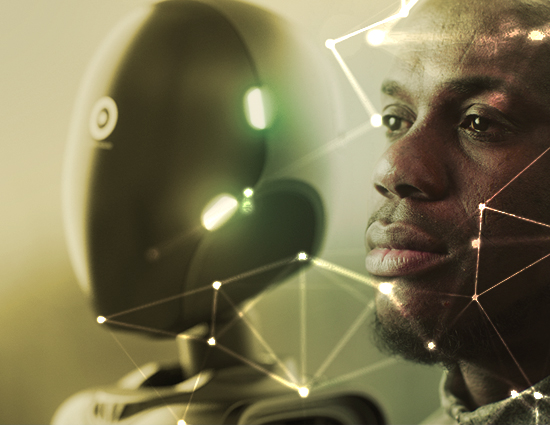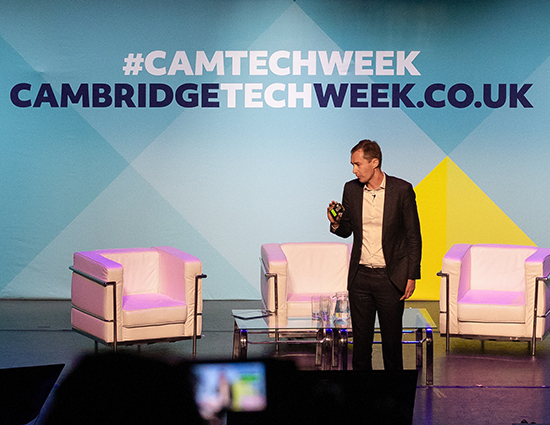Inside CPGs – experts share their views of how CPGs can turn profit from digitally enabled products
Digital transformation is a huge topic, sweeping across many aspects of our lives, from ecommerce to the digitalization of internal systems. When I hooked up with news publisher CGT (Consumer Goods Technology) for its latest webinar, I was keen to focus on a specific part of this topic rather than cover everything at a surface level. We concentrated on the opportunities of digitally enabled products, so we could have time to really dive into details. It was energizing to be joined by a world-class panel of industry experts as we swapped insights into how CPG brands can rise to this challenge.
CGT’s Senior Editor Lisa Johnson kicked off the webinar – ‘Revealed: the secrets of turning profit from digitally enabled products’ – with a ‘why now’ question to the speakers. I jumped in with the consumer perspective and the fact that people are now ready, willing and expectant for change based on changes in other aspects of their lives.; This means CPGs don’t need to create a whole new behavior from scratch. Later, Jonathan Reeves, Laundry and Homecare specialist for Henkel, added a real sense of competitive urgency from the perspective of brands when he said, “If we don’t look at what is going to disrupt us, then somebody else is going to disrupt us”.
Consumer desires, needs and lifestyles
Jonathan raised an interesting point that brands can’t dictate change like they did through the power of advertising from the mid twentieth century onwards. People have become much more selective about what impacts them, so brands must now step up to the plate by doing something radical and distinctive to provoke behavior change.
Closer to his own laundry and homecare commercial environment, Jonathan urged brands to ‘look beyond the pain point’. No-one looks forward to mundane tasks like cleaning the toilet, so the imperative is for brands to evolve from making products to delivering experiences. New skills and capabilities, and companies are realizing they need partners to help create innovation.
Darren Adams, Global Director of Digital Propositions for Unilever broadened this debate by delving a little deeper into the challenge of augmenting consumer engagement. How can brands augment the core of their business without disrupting what made them successful in the first place? He cited the over reliance on product-based perspectives and embedded ways of working. But with changing consumer demand, brands must challenge their mindset and realize that the value is now in services as well as products. For Darren, delivering ‘more than a product’ comes down to three things – ecosystem thinking, an underlying data engine and a mindset shift that allows the culture of innovation to permeate through the business.
We explored the question around what makes embracing digitally enabled products particularly challenging for CPGs. Organizational challenges are a major issue to overcome. CPG companies have optimized themselves over many decades, to make, pack, and ship high-volume mass-market products. Embracing digital demands a different approach not only in the early creation and testing of concepts, but all the way through the process, with different KPIs needed for assessing value, and different operational support after launch.
I made the point that I’d seen success sown when a separate unit is created within a CPG that has the ability to experiment and also the power/autonomy to execute and deliver. And of course, you don’t have to do everything yourself – our teams here at CC are working with lots of CPGs and sharing our physical/digital system innovation expertise with them. A very key point is that it’s very important to see these developments as complete systems that needs to work as ‘one’ to deliver the consumer and business value. A big mistake I always implore clients not to make is to silo skill sets. When I’ve seen digital and the physical hardware activities kept separate with only project management oversight to bring them together then this is a disaster waiting to happen.
As for getting started, Aditya Sehgal, the experienced business leader and former President of Reckitt, urged action – “there’s no time like the present”, as he put it. But he warned against following fashion and doing something obvious in a bad way. Aditya’s advice was to start small, build momentum to overcome resistance and bring people along with you. He made the great point that consumers are in some ways ahead of CPGs in terms of digitalization, so although it might be painful initially it pays in the long-term to be radical. He dropped a little gold dust which I agree with wholeheartedly – think about your brand promise first before considering what you can add to it from a digital perspective. That’s the way to make magic digitally.
Leveraging consumer data assets
The importance of data was a recurring theme throughout the conversation. One of the great benefits of digitally enabled products is that they offer up really high-quality information about consumers – exploding traditional research methods and giving plenty of opportunities to improve consumer engagement, satisfaction and future services. Jonathan cited a great example with Coca-Cola Freestyle, launched to gather a wealth of information. Coca-Cola’s investment, innovation and commitment to new flavors is now driven by consumer use of the Freestyle vending machines and the data that is sent back to it Atlanta headquarters. Henkel’s own historical data on cleaning dating right back to 1876 has informed a digital chatbot for Bosch that offers answers to washing machine questions. So, even data assets that haven’t been used before can be leveraged in entirely new ways to bring value to consumers.
There was still plenty to discuss on this important topic as the clock ticked down to the end of the webinar – with Aditya just having time to predict a couple of hot topics that we’ll be expanding on further in future debates and insights. Watch out for tokenization – I recommend a good Googling session to get under the skin of the topic if you haven’t already – and the metaverse, the place all of us consumers will go for seamless experiences where we don’t even notice the technology at play. Fascinating stuff! You can catch the full webinar recording here, and if there are any aspects you’d like to discuss, just drop me an email – it’ll be great to talk further.
Want to learn more?
As a quick definition to set the scene: By digitally enabled products we mean physical/digital systems. They will all be unique and specific, but they’ll likely include the common ingredients of a connected physical device, a consumer facing app, secure back end digital infrastructure plus AI and analytics. These systems have the potential to bring greater engagement with consumers and alternative revenue streams – hence why so any companies are working to embrace to digital opportunity.





